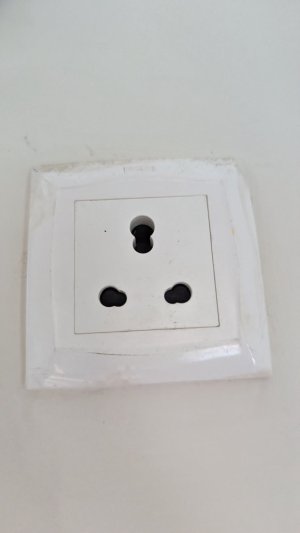by amp i don't mean amplifier, but the measure of electricity commonly used in plugs etc.
in my apartment's switch board, there is a switch for each room. some of them read 6 amps and some read 16 amps. our electrician says that the 16 amp switches are for bathrooms, kitchens etc which use high load electrical appliances - water heaters etc.
according to him, a 6 amp switch can only generate a certain amount of power - 700 watts or so. he says that if i have a 1000 watts step down transformer and the room's switch reads 6 amps, then it is quite likely that the 1000 watt step down transformer will not get that much current.
but in the raksha step down transformer that i use, the input socket seems to use only the standard small (5 amp?) plug. or am i mistaken in that 16 amps plugs are bigger?
so question here is regarding the correlation between amps and watts : how much is the max power a 5 amp switch can handle/generate?
our electrician says that he can swap the 6 amp switch for a 10 amp switch which according to him is now approved by the bangalore electricity board.
appreciate any insights.
in my apartment's switch board, there is a switch for each room. some of them read 6 amps and some read 16 amps. our electrician says that the 16 amp switches are for bathrooms, kitchens etc which use high load electrical appliances - water heaters etc.
according to him, a 6 amp switch can only generate a certain amount of power - 700 watts or so. he says that if i have a 1000 watts step down transformer and the room's switch reads 6 amps, then it is quite likely that the 1000 watt step down transformer will not get that much current.
but in the raksha step down transformer that i use, the input socket seems to use only the standard small (5 amp?) plug. or am i mistaken in that 16 amps plugs are bigger?
so question here is regarding the correlation between amps and watts : how much is the max power a 5 amp switch can handle/generate?
our electrician says that he can swap the 6 amp switch for a 10 amp switch which according to him is now approved by the bangalore electricity board.
appreciate any insights.
Last edited:


